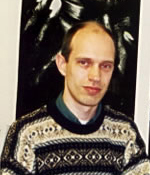Evidence for quark stars is in short supply, with only a handful of observed candidates. Yet new calculations by an international group of theorists paint a better picture of the nature of quark stars, and suggest that they might be easier to spot than previously thought, suggests an article published Jan. 15 at PhysicsWorld.com.
“The main conclusion of our work,” study author Aleksi Vuorinen tells the magazine, “is that there is a clear signature for the possible detection of quark stars – and thus stable strange quark matter.”
But Mark Alford, a WUSTL physicist who uses mathematical modeling to explore the properties of quark stars, contends that the mathematical theory used in Vuorinen’s study is only truly accurate when the quarks are millions of times denser than they are in real neutron stars.

“When they talk about neutron stars, they are extrapolating their calculation into a region where it is not reliable,” he told the magazine. “However, this is an improvement on what was available beforehand…this paper is actually a real step forwards.”
Vuorinen’s study is available as a preprint.
Read the full news article at PhysicsWorld.com.
For more information on Alford’s research, see links below:
Researchers reveal superfluid-superconductor relationship
Shifting boundaries, exotic behaviors
Aug. 5, 2008 — Scientists have studied superconductors and superfluids for decades. Now, researchers at Washington University in St. Louis have drawn the first detailed picture of the way a superfluid influences the behavior of a superconductor. In addition to describing previously unknown superconductor behavior, these calculations could change scientists’ understanding of the motion of neutron stars.
Full story
Physicist: Stars can be strange
Exploring the Strange Matter Hypothesis
Dec. 18, 2006 — According to the “Strange Matter Hypothesis,” which gained popularity in the paranormal 1980’s, nuclear matter, too, can be strange. The hypothesis suggests that small conglomerations of quarks, the infinitesimally tiny particles that attract by a strong nuclear force to form neutrons and protons in atoms, are the true ground state of matter. The theory has captivated particle physicists worldwide, including one of Washington University’s own.
Full story
“Cosmic Anger” by Gordon Fraser
Book Review by Mark Alford, Jan 2009
Full story (pdf)